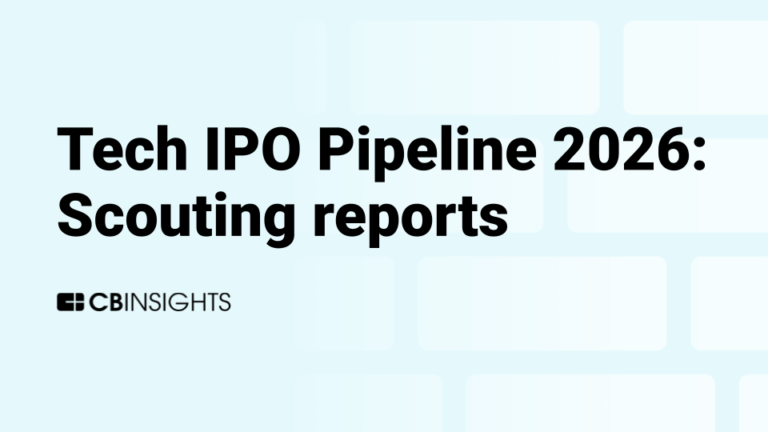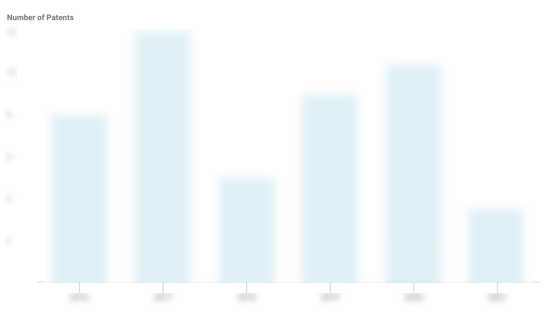
Zapier
Founded Year
2011Stage
Secondary Market | AliveTotal Raised
$2.58MValuation
$0000Revenue
$0000Mosaic Score The Mosaic Score is an algorithm that measures the overall financial health and market potential of private companies.
+31 points in the past 30 days
About Zapier
Zapier specializes in workflow automation within the technology sector. It offers a platform for integrating and automating tasks across over 7,000 applications without coding or information technology (IT) support. The company's services cater to various sectors by providing solutions for marketing campaigns, data management, IT helpdesk, support tickets, and lead management. It was founded in 2011 and is based in San Francisco, California.
Loading...
ESPs containing Zapier
The ESP matrix leverages data and analyst insight to identify and rank leading companies in a given technology landscape.
The AI agent builder platforms market offers no-code and low-code solutions for business users to create and deploy AI agents without programming expertise. These platforms provide drag-and-drop interfaces, pre-built templates, and visual workflow builders for automating tasks like customer support, scheduling, and lead qualification. Key features include integrations with business tools, multi-ch…
Zapier named as Outperformer among 15 other companies, including Salesforce, WRITER, and Glean.
Zapier's Products & Differentiators
Workflows (Zaps)
Workflows are AI-powered automations that connect 8,000+ apps, enabling users to move data and trigger actions without code. They are the foundation of Zapier’s AI Orchestration platform, designed for teams to scale repetitive tasks into intelligent, adaptive processes. Powering more than 2 billion tasks per month, Zaps combine deterministic automation with AI reasoning for both predictable ops and dynamic decision-making.
Loading...
Research containing Zapier
Get data-driven expert analysis from the CB Insights Intelligence Unit.
CB Insights Intelligence Analysts have mentioned Zapier in 1 CB Insights research brief, most recently on Nov 3, 2025.

Nov 3, 2025 report
Tech IPO Pipeline 2026: Book of Scouting ReportsExpert Collections containing Zapier
Expert Collections are analyst-curated lists that highlight the companies you need to know in the most important technology spaces.
Zapier is included in 7 Expert Collections, including Unicorns- Billion Dollar Startups.
Unicorns- Billion Dollar Startups
1,309 items
Generative AI
2,951 items
Companies working on generative AI applications and infrastructure.
Tech IPO Pipeline
257 items
The tech companies we think could hit the public markets next, according to CB Insights data.
Artificial Intelligence (AI)
20,894 items
AI Agents & Copilots Market Map (August 2024)
322 items
Corresponds to the Enterprise AI Agents & Copilots Market Map: https://app.cbinsights.com/research/enterprise-ai-agents-copilots-market-map/
AI agents (March 2025)
376 items
Companies developing AI agent applications and agent-specific infrastructure. Includes pure-play emerging agent startups as well as companies building agent offerings with varying levels of autonomy. Not exhaustive.
Zapier Patents
Zapier has filed 1 patent.
The 3 most popular patent topics include:
- automation
- graphical user interfaces
- software architecture

Application Date | Grant Date | Title | Related Topics | Status |
|---|---|---|---|---|
9/20/2024 | Automation, Web applications, Workflow technology, Software architecture, Graphical user interfaces | Application |
Application Date | 9/20/2024 |
|---|---|
Grant Date | |
Title | |
Related Topics | Automation, Web applications, Workflow technology, Software architecture, Graphical user interfaces |
Status | Application |
Latest Zapier News
Nov 16, 2025
16.11.2025 - 14:43:12 Immer mehr Unternehmen setzen auf biorhythmusorientierte Arbeitszeiten, um Mitarbeiterzufriedenheit und Leistungsfähigkeit zu erhöhen. Der Trend zeigt messbare Erfolge bei Produktivität und Gesundheit. Schluss mit starrem 9-to-5: Immer mehr Unternehmen passen Arbeitszeiten an den individuellen Biorhythmus ihrer Mitarbeiter an. Chronoworking nennt sich dieser Trend, der nicht nur die Produktivität steigern, sondern auch die Mitarbeiterzufriedenheit deutlich erhöhen soll. Führende Tech-Konzerne wie Buffer, GitLab und Zapier setzen das Modell bereits um – mit messbarem Erfolg. Der Ansatz ist simpel: Wer in seinen persönlichen Hochleistungsphasen arbeitet, leistet mehr und fühlt sich besser. Aktuelle Studien aus 2025 belegen das wachsende Interesse an diesem flexiblen Modell, das die traditionelle Arbeitswoche grundlegend verändert. Biorhythmus statt Bürozeiten Die Chronobiologie unterscheidet verschiedene Typen: “Lerchen” starten früh durch, “Eulen” werden spät aktiv. Dazu kommen “Kolibris”, die vormittags und nachmittags ihre produktivsten Phasen haben, sowie unregelmäßige Typen, die sich gut an Schichtarbeit anpassen. Anzeige Passend zum Thema Chronoworking: Viele Wissensarbeiter arbeiten lange, bleiben aber ineffizient, weil sie ihren Arbeitstag nicht systematisch planen. Das kostenlose E‑Book „7 Methoden für ein effektives Zeit- und Aufgabenmanagement“ zeigt praxisnah, wie Sie mit ALPEN, Eisenhower, Pareto und Pomodoro Ihre Hochleistungsphasen optimal nutzen und in weniger Zeit mehr erledigen. Konkrete Schritte helfen, Aufgaben an Ihren Biorhythmus anzupassen. Jetzt gratis E‑Book ‘7 Methoden’ herunterladen Das Problem traditioneller Arbeitszeiten? Sie ignorieren diese natürlichen Rhythmen komplett. Wer dauerhaft gegen seine innere Uhr arbeitet, zahlt den Preis: Stress, geringere Leistungsfähigkeit und gesundheitliche Probleme. Chronoworking dreht den Spieß um und legt anspruchsvolle Aufgaben in die persönlichen Hochphasen. Messbarer Erfolg in Pilotprojekten Die Zahlen sprechen für sich. Mitarbeitende im Einklang mit ihrem Biorhythmus sind konzentrierter, machen weniger Fehler und erledigen Aufgaben schneller. Das Stresslevel sinkt, die Burnout-Gefahr reduziert sich deutlich. Für Unternehmen bedeutet das: Stärkere Mitarbeiterbindung in Zeiten des Fachkräftemangels Bessere Arbeitsergebnisse bei gleichzeitig zufriedeneren Teams Gerade im Kampf um Talente wird flexible Arbeitszeitgestaltung zum entscheidenden Wettbewerbsvorteil. Koordination bleibt die große Hürde Trotz der Vorteile zögern viele Firmen. Die größte Herausforderung: Teams mit verschiedenen Chronotypen zu koordinieren. Wie plant man Meetings, wenn einige um 7 Uhr morgens produktiv sind und andere erst ab 11 Uhr? Die Lösung liegt in digitalen Tools wie Slack, Asana oder Zoom – und einem fundamentalen Umdenken. Manager müssen Kontrolle abgeben und Ergebnisse statt Anwesenheit bewerten. Das erfordert Vertrauen und neue Führungsstrukturen. Nicht alle Branchen können mitmachen. In der Produktion oder im direkten Kundenkontakt bleiben feste Zeiten oft notwendig. Doch überall dort, wo Wissensarbeit im Vordergrund steht, öffnet sich ein enormes Potenzial. Von New Work zum personalisierten Arbeitsmodell Chronoworking fügt sich nahtlos in die New Work-Bewegung ein, die durch die Pandemie beschleunigt wurde. Nach Homeoffice und hybrider Arbeit ist es der nächste logische Schritt: Flexibilität nicht nur beim “Wo”, sondern auch beim “Wann”. Eine Owl Labs-Umfrage zeigt: 41 Prozent der Mitarbeitenden sehen flexible Arbeitszeiten als Top-Benefit bei der Jobwahl. Die Nachfrage ist da – jetzt müssen Unternehmen nachziehen. Eine EY-Studie von Anfang 2025 offenbarte ein Motivationsloch in der deutschen Arbeitslandschaft. Der Druck auf Arbeitgeber wächst, attraktivere Rahmenbedingungen zu schaffen. Chronoworking könnte die Antwort sein. KI macht individuelle Planung möglich Die Zukunft gehört personalisierten Arbeitszeitmodellen. Was heute noch innovativ klingt, wird morgen Standard sein. Künstliche Intelligenz wird die komplexe Planung und Koordination individualisierter Arbeitszeiten zunehmend erleichtern. Der Paradigmenwechsel ist unaufhaltsam: weg von der investierten Zeit, hin zum erzielten Ergebnis. Starre 9-to-5-Modelle werden zur Ausnahme – ein Wandel, der Produktivität und Wohlbefinden gleichermaßen steigern dürfte. Anzeige PS: Wer seine produktivsten Stunden an die richtigen Aufgaben koppelt, erreicht mehr und bleibt gesünder. Das kostenlose Themenheft erklärt in kompakten Schritten, wie Sie Ihren Tag in 25‑Minuten‑Sprints strukturieren, Prioritäten setzen und Meetings so legen, dass sie zu Ihren Chronotypen passen. Ideal für Teams, die Chronoworking einführen wollen. Jetzt kostenloses Themenheft zu Zeitmanagement sichern @ boerse-global.de
Zapier Frequently Asked Questions (FAQ)
When was Zapier founded?
Zapier was founded in 2011.
Where is Zapier's headquarters?
Zapier's headquarters is located at 548 Market Street, San Francisco.
What is Zapier's latest funding round?
Zapier's latest funding round is Secondary Market.
How much did Zapier raise?
Zapier raised a total of $2.58M.
Who are the investors of Zapier?
Investors of Zapier include Sequoia Capital, Bessemer Venture Partners, Threshold Ventures, Kevin Hale, Permanent Equity and 5 more.
Who are Zapier's competitors?
Competitors of Zapier include n8n, Waylay, Paradigm, VernSense, Procesio and 7 more.
What products does Zapier offer?
Zapier's products include Workflows (Zaps) and 4 more.
Loading...
Compare Zapier to Competitors

Make operates as an automation platform enabling no-code development and enterprise solutions. The company provides an interface for creating and automating workflows, tasks, and system integrations without the need for coding. Make serves various sectors including information technology (IT), operations, marketing, sales, finance, customer experience, and human resources. Make was formerly known as Integromat. It was founded in 2012 and is based in Prague, Czech Republic.

Tray.ai works as an integration platform as a service (iPaaS) that supports integration and automation across various business processes. The company offers tools for creating, managing, and executing integrations and automations, focusing on artificial intelligence. Tray.ai primarily serves sectors that require digital transformation and process automation solutions, such as the technology industry, finance, and enterprise management. It was founded in 2012 and is based in San Francisco, California.

IFTTT operates as a no-code automation platform facilitating the integration of various applications and services across business and home environments. The platform allows users to create automation sequences, known as Applets, that trigger actions based on specific events. It was founded in 2010 and is based in San Francisco, California.

Workato focuses on enterprise business processes and artificial intelligence (AI). The company provides tools for application programming interface (API) management, data orchestration, workflow automation, and low-code application development, enabling integration of applications, data, and workflows across various business functions. Workato serves sectors such as manufacturing, financial services, retail, logistics, healthcare, media, business process outsourcing (BPO), and non-profit organizations. It was founded in 2013 and is based in Palo Alto, California.
DYSNC is an integration platform that joins fragmented systems together. The platform enables companies to integrate both cloud and on premise applications with an advanced data transformation and mapping engine.
Relay.app is an automation tool that focuses on workflow automation across different applications. It provides a platform for users to create automated workflows with AI capabilities and includes a feature for manual intervention at certain points. Relay.app serves sectors that need integration and automation of business processes, including marketing, sales, and customer support. It was founded in 2021 and is based in San Francisco, California.
Loading...
